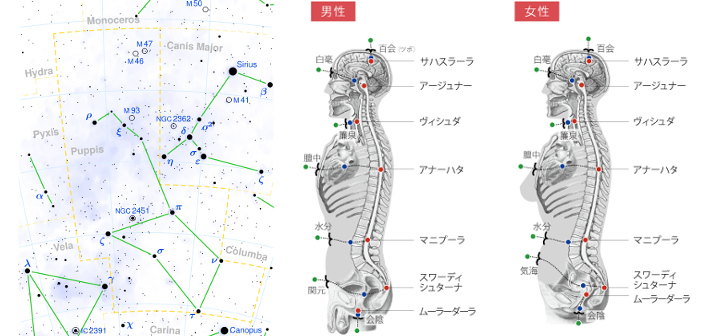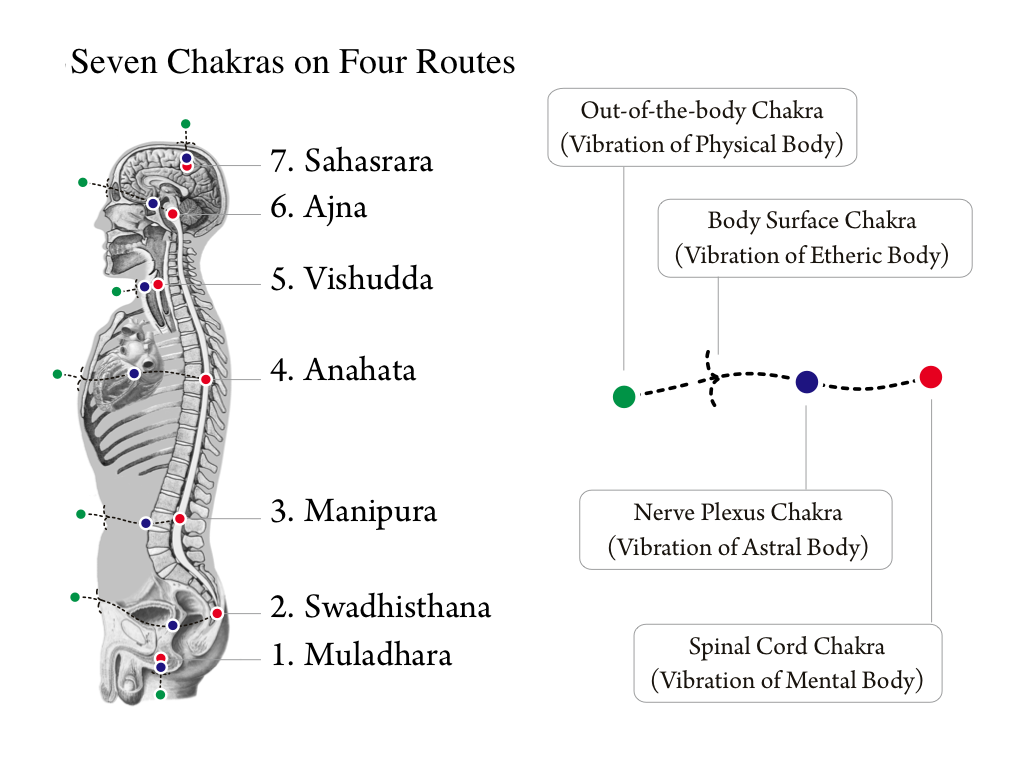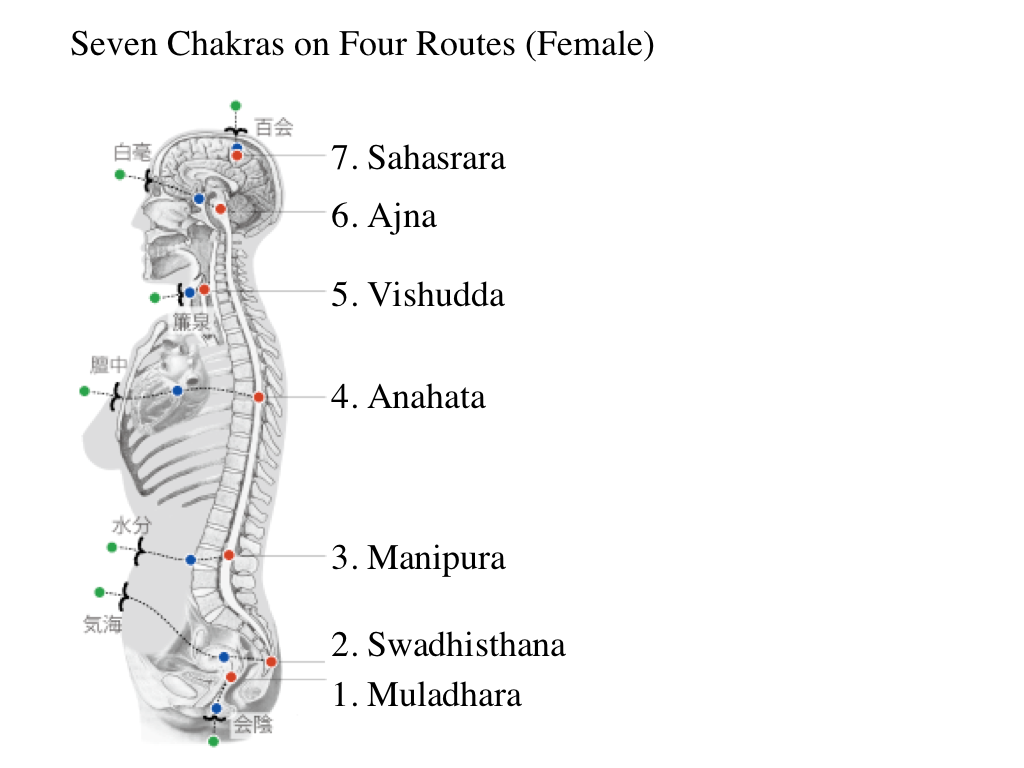left: Author:Torsten_Bronger
[CC BY-SA] / right: Shanti Phula
A huge amount of light of Takakiuchuuno-hikarino-himemiko, the Central Sun of the Universe, has been showered on
Earth
In yesterday’s article “Heavenly Message by Mrs. Seiko Nakanishi 44”, I introduced a message from
Takakiuchuuno-hikarino-himemiko, the Central Sun of the Universe. In the communication I mentioned the fact that the
light of the goddess has been showered on Earth.
It is relatively easy to check if the goddess’ message is authentic. See the divine message and try to slightly
focus on the Sahasrara chakra on the top of the head. Highly sensitive people will be able to feel light flowing
into the chakra and they will experience a tingly sensation on the head when gazing at this message for a while.
As a matter of fact, it is possible to take in more light by repeatedly chanting the divine name of the goddess. (Editor’s Note: Chant her name as “Takaki-uchu-u-no-hikarino-himemiko-sama.”) However, since a huge amount of light is being showered, I am afraid that even when chanting the divine name in an
ordinary way, some people whose chakras or nadis (fine vascular channel) are blocked might feel sick.
So, I’d like to show you how to take in the divine light as safely as possible.
As shown in the figure below, there are four routes of
chakras: outside the body, on the body surface, on the nerve plexus and on the spinal cord. According
to traditional yoga teachings, chakras mean the chakras on the spinal cord and the chakras are located in the
backbone. However, when New Agers say chakras, they depict chakras on the center line of the body or on the median
line (conception vessel) of the body surface connecting hyakue, hakugou.. and perineum. They actually mean chakras
on the nerve plexus and chakras on the body surface. Beside these chakras, there exist chakras outside the body
located five centimeters away from the chakras on the body surface.
The simplest way is to image that there is a pipe along the route connecting each chakra on the spinal cord first;
and then image that the pipe is completely open and it is never blocked; and chant the divine name of the goddess 10
times (or any number of times is all right). I think that when you chant the divine name, you can feel light enter
from the Sahasrara chakra and go down along the route of chakras on the spinal cord. And image that light goes
through the pipe down to the tailbone and outflows toward earth.
Next, image that there is also a pipe along the route connecting each chakra on the nerve plexus like the route of
chakras on the spinal cord, and chant the divine name 10 times. Image that light goes down through the pipe and goes
out from the perineum.
Do the same procedure for the route of chakras on the body surfaceand the route of
chakras outside the body, respectively. While chanting the divine name ten times, take in light from the Sahasrara
and let out light from the Muladhara chakra for respective routes. All you
have to do is to chant the divine name a total of forty times. If you do this, you will understand that you feel as
if you have been charged with a huge amount of energy in the body.
I’ll explain another way. For example, think of receiving light along the route of chakras on the spinal cord. Chant
the divine name once and image that the light of the goddess enters the body through the Sahasrara chakra. Chant the
divine name again and image that the light goes through the Ajna chakra. Like this, every time you chant
the divine name, image that light goes through each chakra and when chanting the divine name the seventh time, image
that light flows down from the Muladhara chakra. There is another way: Every time when you chant the divine name
three times, image that light descends toward your thighs and your knees and finally to the earth. Do the same
procedure for the remaining routes of chakras on the spinal cord, on the body surface and outside the body.
When any route or chakra is blocked, it is difficult for light to go through the place and some people might feel
sick while chanting the divine name. On such an occasion, please stop chanting. Don’t push yourself.
For example, think of pouring water into a bottle using a funnel. When the funnel gets stuck or too much water is
poured, the water will overflow. It is the same with nadis or chakras. When nadis or chakras are blocked, light
cannot flow in and it will overflow. Now such unimaginably huge amount of light is being showered.
All you have to do is to chant the divine name only 40 times. However, chanting the divine name has a profound
effect and it will drastically change your body structure. I think that it is rather easy to do so three times a
day. You can do so not only just three times but any time you want to do so. I can say that you are given a rare
chance in terms of spiritual progress.
February 18, 2019
Masatoshi Takeshita
As shown in the figure below, there are four routes of chakras corresponding to four bodies.
Chakra
Reference:
Sahasrara
Sahasrara (Sanskrit: सहस्रार, IAST: Sahasrāra, English: “thousand-petaled”) or crown chakra
is the topmost chakrain the subtle body, located in the crown of the head. In
esoteric Hinduism and New Age western systems, it is generally considered to be the highest spiritual center and the
state of pure consciousness, within which there is neither object nor subject. When the feminine Kundalini Shakti
rises to this point, it unites with the masculine Shiva, the yogi or yogini achieves self-realization and a state of
liberating samadhi is attained. The chakra is symbolized by a lotus with one thousand multi-coloured petals.[63]
In esoteric Buddhism, it is called Mahasukha and is generally considered to be the petal lotus of “Great Bliss” and
corresponding to the fourth state of Four Noble Truths.[62]
Ajna
Ajna (Sanskrit: आज्ञा, IAST: Ājñā, English: “command”) also called guru chakra or third-eye chakra is the
subtle center of energy, believed to be located between the eyebrows, located
behind it along the subtle (non-physical) spinal column. It is so called because this is the spot where the tantra
guru touches the seeker during the initiation ritual (saktipata). He or she commands the awakened kundalini to pass
through this center.[64]
It is symbolised by a lotus with two petals.[64] It is at this point that the two side nadi Ida (yoga) and Pingala
are said to terminate and merge with the central channel Sushumna, signifying the end of duality, the characteristic
of being dual (e.g. light and dark, or male and female).
Vishuddha
Vishuddha(Sanskrit: विशुद्ध, IAST: Viśuddha, English: “especially pure”), or
Vishuddhi, or throat chakra is located at the base of subtle body’s throat.[3]
It is symbolized as a sixteen-petaled lotus.[3] The Vishuddha is iconographically represented with 16 petals covered
with the sixteen Sanskrit vowels. It is associated with the element of space (akasha) and has the seed syllable of
the space element Ham at its center. The residing deity is Panchavaktra shiva, with 5 heads and 4 arms, and the
Shakti is Shakini.[citation needed]
Anahata
Anahata (Sanskrit: अनाहत, IAST: Anāhata, English: “unstruck”) or the
heart chakra is located in or behind the heart.[65]
It is symbolised by a lotus with twelve petals.[65] Within it is a yantra of two intersecting triangles, forming a
hexagram, symbolising a union of the male and female as well as being the esoteric symbol for the element of air
(vayu). The seed mantra of air, Yam, is at its center. The presiding deity is Ishana Rudra Shiva, and the Shakti is
Kakini.[citation needed]
Manipura
Manipura(Sanskrit: मणिपूर, IAST: Maṇipūra, English: “jewel city”) also called
the nabhi chakra or the solar plexus/navel chakra,
is located in the navel regionalong the subtle body’s spinal column.[3] For
the Nath yogi meditation system, this is described as the Madhyama-Shakti or the intermediate stage of
self-discovery.[61]
This chakra is represented as an upward pointing triangle representing fire in the middle of a lotus with ten
petals. The seed syllable for fire is at its center Ram. The presiding deity is Braddha Rudra, with Lakini as the
Shakti.[citation needed]
Svadhishthana
Svadhishthana (Sanskrit: स्वाधिष्ठान, IAST: Svādhiṣṭhāna, English: “the residence of the self”) or sacral
chakra believed to be located at the root of the sexual organalong the spine
in the subtle body.[3]
It is symbolised as a six-petaled lotus.[3] Svadhisthana is represented with a lotus within which is a crescent moon
symbolizing the water element. The seed mantra in its center is Vam representing water. The presiding deity is
Brahma, with the Shakti being Rakini (or Chakini).[citation needed]
Muladhara
Muladhara(Sanskrit: मूलाधार, IAST: Mūlādhāra, English: “root support”) or root
chakra located at the base of the spinein the coccygeal region of the subtle
body. Dormant Kundalini is often said to be resting here, wrapped three and a half, or seven or twelve times.
Sometimes she is wrapped around the black Svayambhu linga, the lowest of three obstructions to her full rising (also
known as knots or granthis).[66] It is symbolised as a four-petaled lotus with a yellow square at its center
representing the element of earth.[3]
The seed syllable is Lam for the earth element (pronounced lum),. All sounds, words and mantras in their dormant
form rest in the muladhara chakra, where Ganesha resides,[67] while the Shakti is Dakini.[68] The associated animal
is the elephant.[69]
Note:
Black and red bold typeface letters by Shanti-phula



Leave a Reply